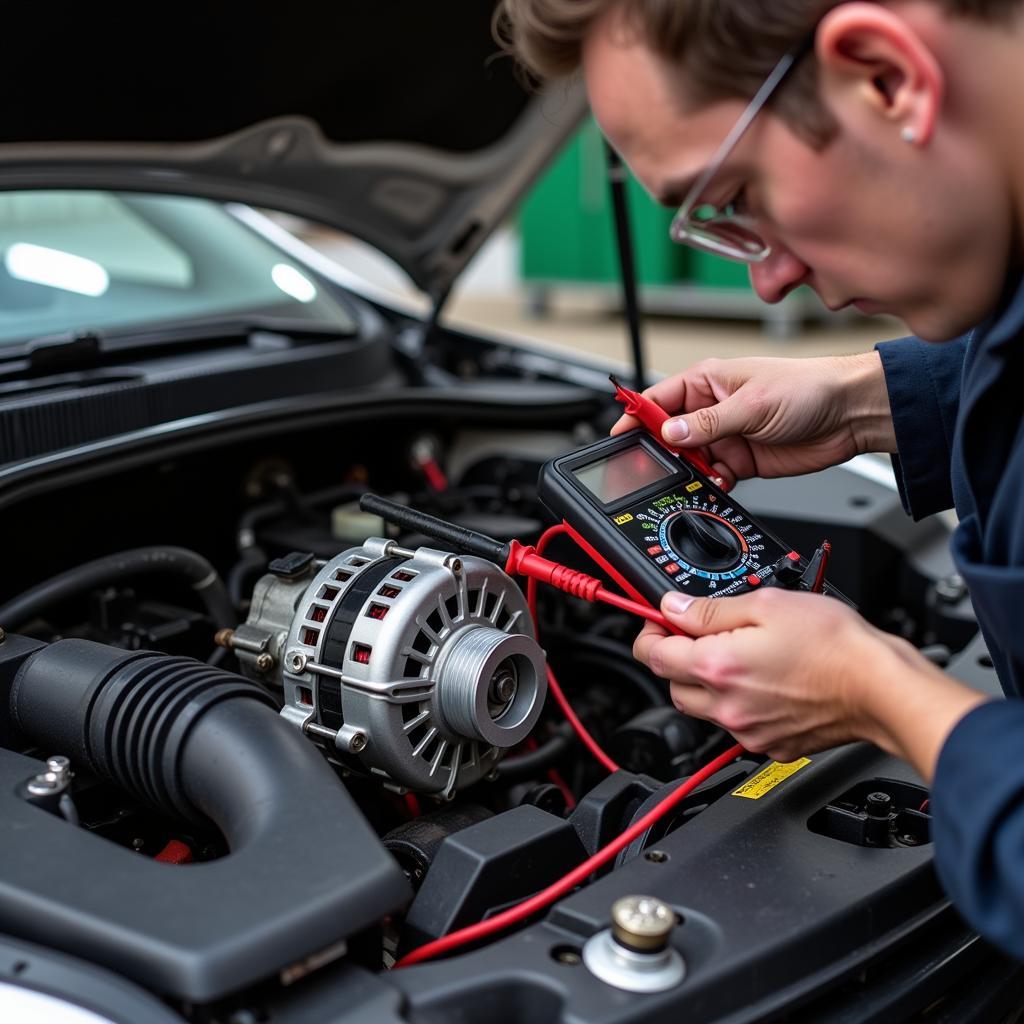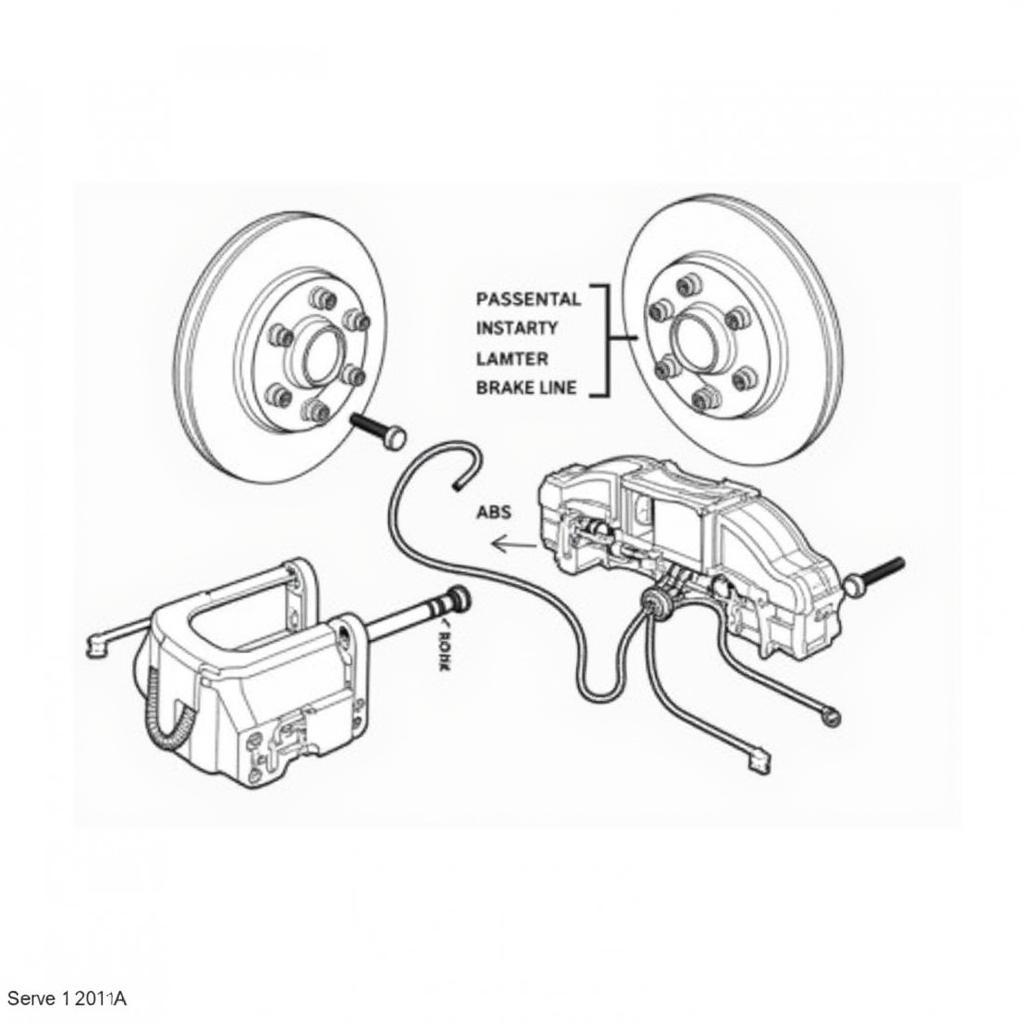A dead battery can ruin your day, but sometimes the culprit isn’t the battery itself. It could be a bad alternator. Figuring out which one is the problem is crucial to getting your car back on the road. This article guides you through diagnosing whether you have a bad car battery or alternator, offering practical advice and remote diagnostic solutions.
Is it a Bad Battery or Alternator? Key Differences and Symptoms
Identifying the root cause of your car troubles begins with understanding the distinct roles of the battery and alternator. The battery stores power and starts the car, while the alternator recharges the battery and powers the electrical systems while the engine is running. A failing component in either can lead to a cascade of issues.
Recognizing a Failing Battery
A bad battery often presents itself through:
- Slow engine crank: The engine struggles to turn over or cranks slowly.
- Dim headlights: Headlights appear dimmer than usual, especially when idling.
- Clicking sound when turning the key: This indicates insufficient power to engage the starter.
- Interior lights flickering or malfunctioning: Electrical components like power windows or the radio may operate erratically.
- Battery warning light illuminated: Although this could also indicate an alternator problem, it’s a good starting point for investigation.
Spotting a Faulty Alternator
Unlike a bad battery, a failing alternator can manifest in different ways:
- Dim or flickering headlights: Headlights become increasingly dim as the engine runs, unlike a failing battery where the dimming is most noticeable at idle.
- Growling or whining noise from the engine compartment: This sound often originates from the alternator’s bearings wearing out.
- Battery warning light illuminated: The same light that signifies a bad battery can also point to a failing alternator.
- Electrical system malfunctions: The car’s electrical components may behave erratically, similar to a failing battery, but often worsen as the engine runs.
- Burning smell: An overworking or failing alternator may emit a burning smell due to excessive heat.
 Testing Car Alternator with Multimeter
Testing Car Alternator with Multimeter
Diagnosing the Problem: DIY Methods and Remote Diagnostics
Several methods can help you pinpoint the problem. Here are some DIY steps you can take:
- Jump-starting the car: If the car starts with a jump but dies soon after, it suggests a bad alternator failing to recharge the battery. bad battery or alternator or starter
- Testing the battery voltage: Use a multimeter to check the battery voltage. A healthy battery should read around 12.6 volts. A lower reading indicates a potential battery problem.
- Testing the alternator voltage: With the engine running, check the voltage at the battery terminals. A properly functioning alternator should produce between 13.5 and 14.5 volts. bad alternator new battery
However, these methods aren’t foolproof. For more advanced diagnosis, remote software-based solutions offer a comprehensive assessment of the battery, alternator, and entire electrical system. These remote diagnostic services can accurately pinpoint the faulty component, eliminating guesswork and saving you time and money. battery bad or alternator
“Remote diagnostics are revolutionizing car repair,” says automotive electrical engineer, Dr. Sarah Chen. “They allow for precise identification of issues without even opening the hood, enabling faster and more efficient repairs.”
Addressing the Issue: Repair or Replacement?
Once the culprit is identified, the next step is determining the appropriate course of action. A bad battery typically requires replacement. Alternator issues, depending on the severity, might be repairable. However, in many cases, replacement is the most cost-effective long-term solution. bad battery or alternator
“It’s crucial to address these problems promptly,” advises automotive technician, Mark Johnson. “Ignoring a failing battery or alternator can lead to more extensive and costly damage to other car systems.”
Conclusion: Keeping Your Car Powered Up
Understanding the difference between a bad car battery or alternator empowers you to take control of your car’s health. By recognizing the symptoms and utilizing available diagnostic methods, including remote diagnostic services normal parasitic draw, you can address the problem quickly and get back on the road with confidence.


